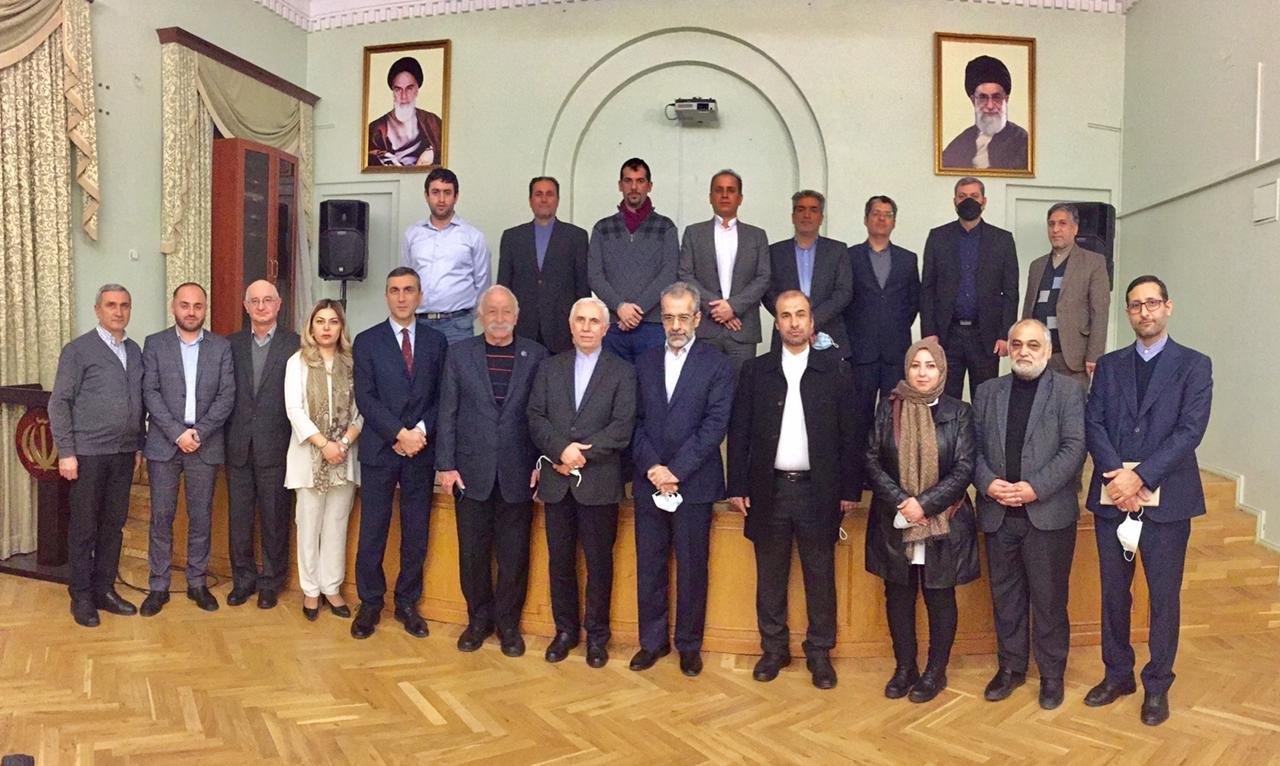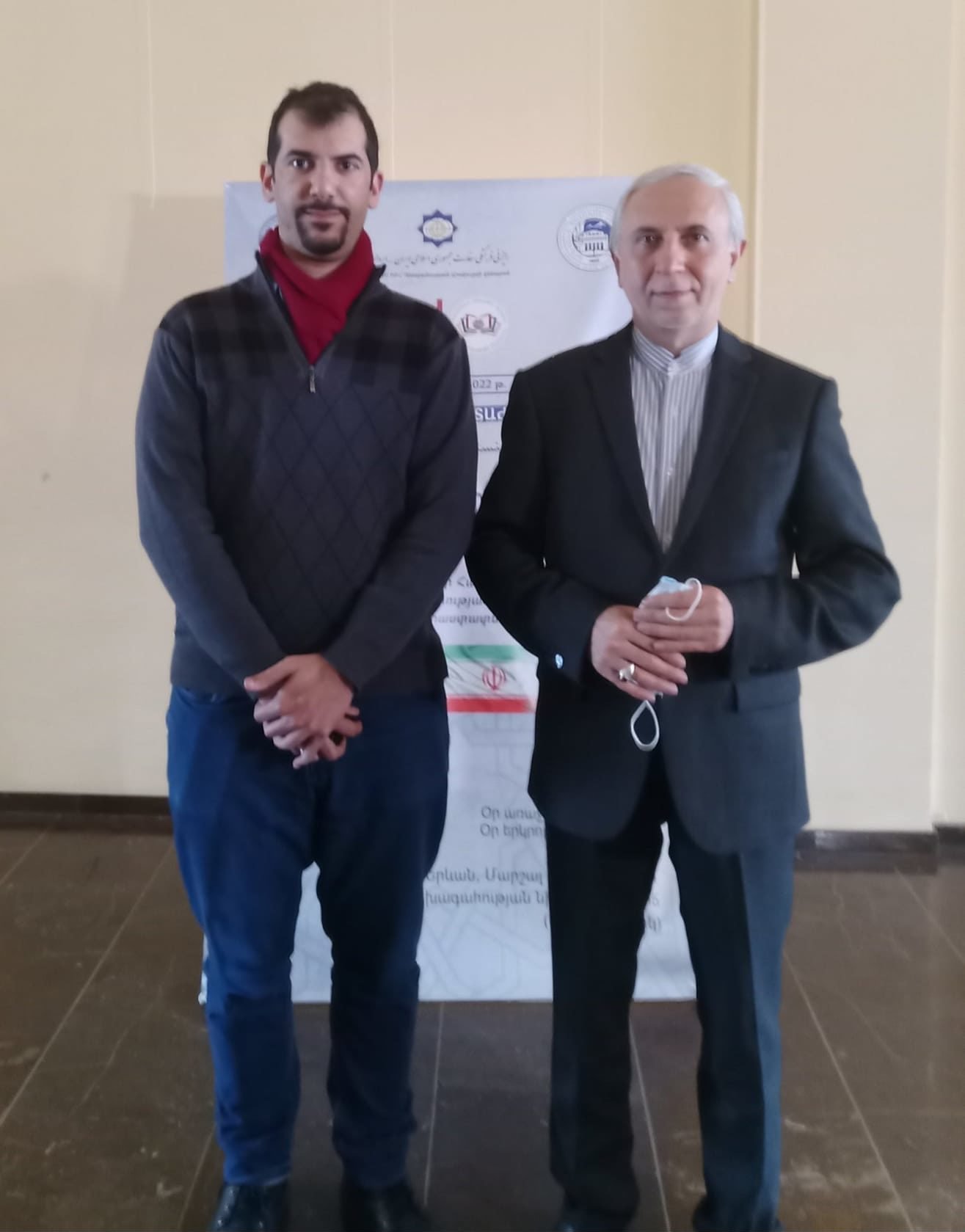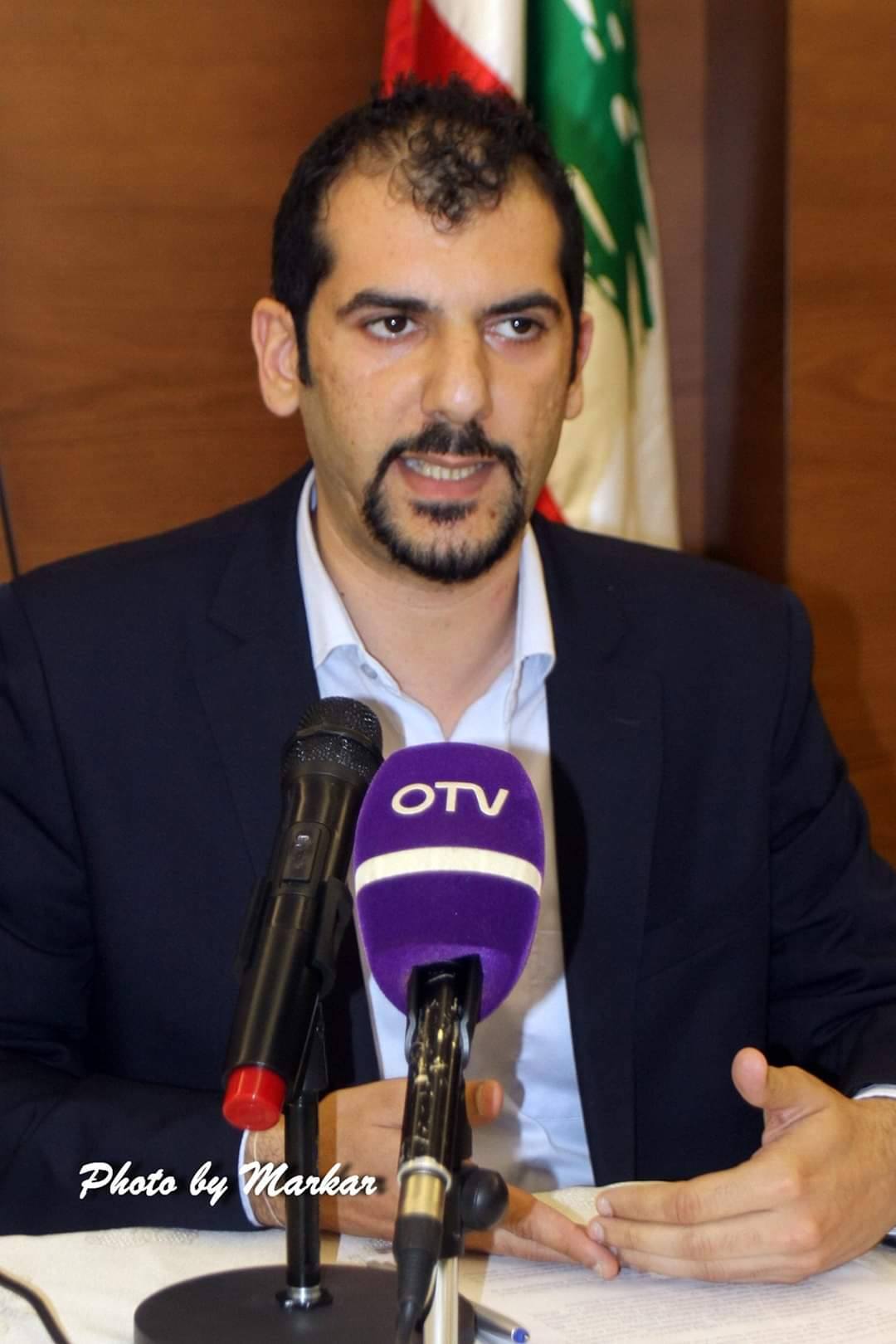
The Iranian Studies Department of the Oriental Studies of the Armenian National Academy of Sciences, together with the Iranian Cultural Center of the Embassy of Islamic Republic of Iran at Yerevan and Yerevan State University, organized a two-day international conference from February 9-10, 2022 titled “Armenia-Iran Historical Past and Present” dedicated to the establishment of diplomatic relations between both countries. There were more than 20 speakers, diplomats and scholars (Armenians and Iranians), and I was one of them. Iranian-Armenian MPs Robert Beglarian and Ara Shaverdian were also in attendance.
The conference aimed to highlight the history of Armenian-Iranian relations, ranging from political and cultural to economic relations and came up with recommendations to push this relation to different levels. The Iranian Ambassador Extraordinary and Plenipotentiary to Armenia H.E., Mr. Abbas Badakhshan Zohouri in his opening speech for the conference highlighted the geostrategic importance of the Iran-Armenia border; the decision of the Iranian government to open a consulate in Kaban, Syunik; the geopolitical significance of the North-South Transport Corridor; and increasing the trade turnover between both countries to $1 billion.

The following topics were addressed:
Armenian scholars pointed to the civilizational relations between both states, the importance of preserving the current border, the Pan-Turkic threats and Iran’s passive diplomacy during the 2020 Artsakh war. They also expressed concerns regarding the threat of the “Zangezur Corridor” and Azerbaijan’s territorial claims on Armenia.
Iranian scholars pointed out that the 2020 war on Artsakh was not just a war against Armenia, but also Iran. They hinted that by establishing a “Zangezur Corridor,” Turkey-Azerbaijan-Israel are trying to cut Iran’s alternative routes to Europe and Russia. They stressed the importance of the North-South Corridor for both countries, the increase of trade turnover to more than $1 billion and negotiations regarding the free economic zone in Meghri.
Interestingly, none touched on possible military cooperation between both countries.
My Recommendations for the Strengthening of Armenia-Iran Relations
In my concluding speech during the conference, I came up with the following recommendations:
If in the future, Iran joins the Eurasian Economic Union (EAEU), it would have better access to Eurasian, Russian and European markets. This accession would also provide EAEU member states with increased access to the Persian Gulf and increase trade and give stronger impetus and incentive for both sides (Iran and other EAEU members) to pursue common interests in third-party states like in the Levant. So Russia and Iran would have stronger cooperation in the Levant and other regions. Hence, they will work to protect their shared economic interests. Therefore, with the unblocking of regional trade routes, in the long run, Armenia would have access to the Levantine markets and reach the Eastern Mediterranean by rail. Iran should facilitate this project so that Armenia would have access to the seas through Iran and not Turkey.
Both Armenia and Iran could launch rapid joint cooperation through joint venture plans and also through Iran’s investments in Armenia’s highways, especially from the Norduz border crossing to Yerevan in order to widen the capacity of the North-South Corridor. From the Iranian perspective, this would widen not only Armenian-Iranian and regional trade, but also promote Iran’s geo-economic interests in Armenia. Such steps may further attract Indian, Chinese and European investments, which would empower Armenia’s security and stability.
Both Armenia and Iran can also have military cooperation for the sake of regional stability and to ensure that geopolitical borders of regional countries will remain stable and unharmed, especially in Armenia, and to ensure that states like Israel and the US will not try to make a scapegoat of Armenia and weaken Armenia for the sake of their plans in the Caucasus. For this reason, an intelligence cooperation center should be created both in Armenia and Iran where both sides can share, analyze and assess regional threats and terror activities that may expose a threat to both countries and regional securities. To facilitate this process, direct communication channels must be established between the security service institutions of both countries. The target of this initiative should be pan-Turkic and Jihadi terrorist groups,
Opening an Iranian consulate in Syunik is the right step; however, a military coordinator/attaché is needed to analyze the military developments on the border and directly report to Tehran. The opening of the consulate will pave the way for other states to take similar steps and preserve Armenia’s sovereignty with international backing on Syunik.
Communication needs to be enhanced between Armenia and the Diaspora communities in Iran, Iraq, Syria and Lebanon in order to compare and assess Iranian intentions and policies in the Middle East and South Caucasus. These communities can act as secondary embassies to facilitate communication and information sharing between different Iranian and pro-Iranian organizations and the Republic of Armenia. For these reasons, having strong communities in Lebanon and Syria is in the interest of both Armenia and Iran.
After our conference, the Iranian ambassador invited us for a reception at his embassy hall. During a three-hour meeting, in a positive atmosphere, we discussed with the Iranian ambassador and the diplomats about the current challenges and the future of bilateral ties between both countries, geopolitical concerns and threats, and provided suggestions.
Conclusion and Reflection
From this conference and meeting with Iranian diplomats and scholars, I have come to the following conclusion.
- Armenia cannot expect more from Iran. Iran has done its share and now expects Yerevan to positively respond. Iran will never militarily intervene in any possible future border crisis between Armenia and Azerbaijan. What Iran can do is to use some hard power to send messages (military exercises, redeployment of forces in the north). Iran cannot alienate and antagonize its large Iranian-Azeri community which is fully integrated into the Iranian society.
- Iran is satisfied with the current status quo (even though it acknowledges that it has so many gaps), as long Russia doesn’t lose its sphere of influence in the Caucasus. For the time being, Iran cannot alone compete with the rising Turkish influence.
- Iran supports peace and economic growth in the region. The Iranian economy needs markets to export its products and modernize its industry. The conflict between Armenia and Azerbaijan was, to some extent, an obstacle to push for trade activities in the region. Now that both sides are engaging in “dialogue” through Russia, Iran is pushing its geo-economic ambitions forward.
- The North-South Transport Corridor is crucial for Iran. Iran proposed many ideas for Armenia, but is still waiting for a response from Armenian authorities.
- Armenia, with its Christian cultural heritage, is seen as a successful model for the Iranians to provide a civilizational dialogue and Christian-Islamic harmony and a role model that Iran can engage in similar models with other Christian countries in the world, namely the West.
- Armenia and Iran have done so little to strengthen their cultural, trade, and political ties.
- For now, military-technological (arms industry) cooperation is out of the question.



Thanks Yeghia, your contributions and dedication to advancement of Armenian causes and gaining support from your Southern Neighbor is remarkable. Mr Badakhshan and all embassy staff in Yerevan are lovingly pursuing the promotion of relationships in support of Armenians. Sense of comradery is pulpable. Iran’s Industrial, Mining & Trade Minister will visit Yerevan this week. That’s a good opportunity for Armenian government to firm up some of the projects and reciprocate advances from Iranian side. After removal of sanctions, all countries will send their delegates to Iran for fostering relationships, but we may have a different expectation from Armenia and Armenian government. And I partially disagree with one of your points about we cannot do much more because “large Iranian-Azeri community which is fully integrated into the Iranian society” Yes all Azeris are fully integrated in Iranian Societies, like myself 50% Azeri, Like the leader 100% Azeri, much more Azeri than Aliyev and his family. Though, I recommend your readers to better understand the feeling of Iranian Azeris, go to Ardebil, Tabriz Urmia, … or study the perception of Azeris in Iran about Northern Azerbaijan (That’s how we see it) as part of Iran, they are our brothers and Sisters, as you are, that was the feeling after collapse of soviet union and is the feeling now. Iran will use the bond and friendship and brotherhood between all of us to advocate for intertwined regional unions, similar to European Union, so all of us can prosper together, no aggression, no war, no brother against brother. Turkey, Iran, Azerbaijan, Georgia, Gilan, Kurdestan, … we are all the same, with different mother tongue, religions, etc. but more in common than any other nation, those differences make our meting pot unique and beautiful, and it had been like that for thousands of years. It was heartbreaking to see casualties of earthquake in Van (Turkey) we were in tears and rushed to support with whatever we had, and is heartbreaking to see casualties of war between Azerbaijan and Armenia. We don’t want to be the region’s Gendarme, but we will not tolerate aggression toward Armenia. Full Stop.
The ideology of referring to artificial Azerbaijan republic in South Caucasus as “Northern Azerbaijan” is an anti-Iranian separatist ideology based on falsehood and fascist pan-Turkism. For a “Northern Azerbaijan” to exist implies the existence of “Southern Azerbaijan” and there is no such thing. The artificial terrorist state of Azerbaijan, a gas station disguised as a country, was invented at the end of WWI in 1918 with the defeat and collapse of the genocidal Ottoman Empire by criminal non-native Turkish terrorists, with roots from Central Asia, in collaboration with criminal Soviets. It was artificially invented as a Turkish outpost in the South Caucasus for the pursuit of fascist pan-Turkic agenda and as a base for now-defunct Soviet expansion into Persia and the Middle East.
This terrorist cesspool was initially and artificially created for the homeless Caucasian Muslim Tatars and renamed to “Azerbaijan” only in 1936 despite protests by the Iranian government. It was given this name intentionally and as part of Turkish-Azerbaijani pan-Turkic and pan-Turanic politics so as to falsely claim this artificial republic in the South Caucasus as “Northern Azerbaijan” and Iranian provinces bearing this name in Northwestern Iranian region within the sovereign territory of Iran as “Southern Azerbaijan” and as part of a cooked-up separatist scheme. Any reference to “Azerbaijan” is a reference to the ancient Persian territory of “Atropatane” located within Iran to the south of the Araxis River. There has never been a political entity or a nation-state bearing this artificial name to the north of the Araxis River in the South Caucasus. What is called Azerbaijan republic today is occupied ancient Armenian and Persian territories
P.S. there are no “Azerbaijanis” in Iran. There are only pseudo-Turkish Azerbaijani-speaking Persians living in Iranian provinces bearing this name.
Thanks Ararat, Atropatane was a dynasty in Northwest of Iran, and I agree with you that the name has changed after Arab’s occupation. Iranian Land was occupied by Russia 200 years ago during Qajar dynasty. Iranian-Armenian, Iranian-Azeri, Iranian-Georgian, Iranian Gilaks, Iranian-kurds, Iranian-Persians, Iranian-Arabs, Iranian-Balochis fought valiantly against the occupiers, but forces assembled by Tsar overwhelmed them and Border was shifted to Aras River after two major battles. My mom / dad, myself, etc. and all Azeri / Armenian speakers in Iran, are super-proud of their Iranian nationalities. Iran is melting pot of cultures and customs, ethnicities and backgrounds, it is the reality of an old empire that had and has satraps / provinces across three continents from India to Hungry, From caucuses to Tunisia.